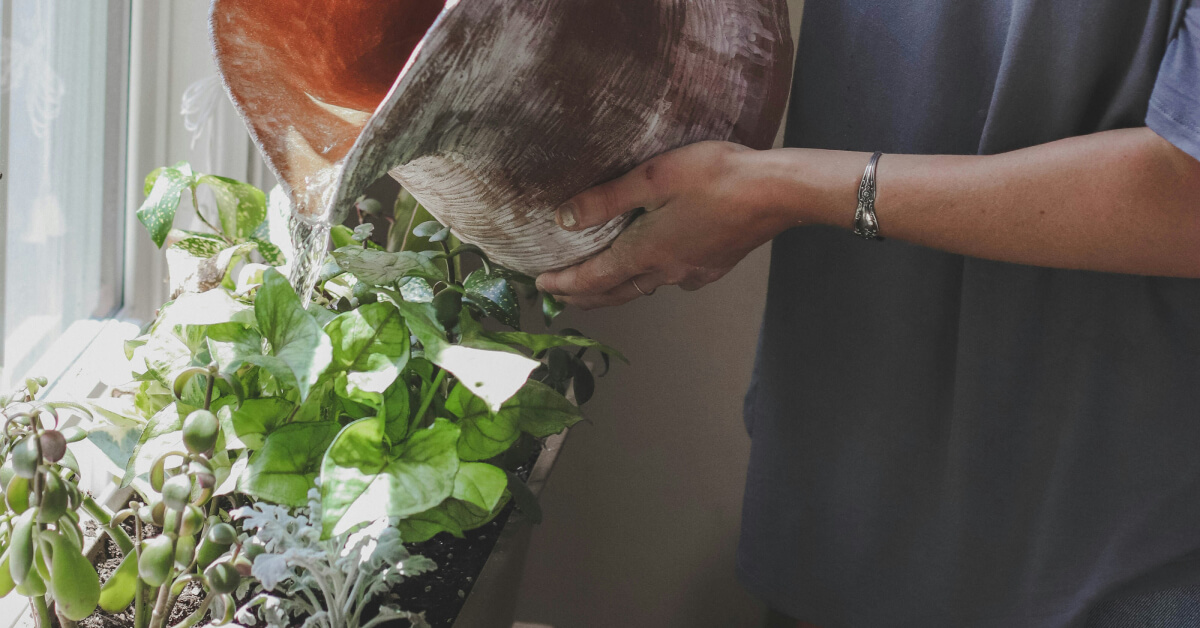Watering is one of the most important aspects of indoor plant care, yet it is often one of the most common mistakes plant owners make. Too much water leads to root rot, while not enough can cause wilting and stunted growth. Getting the right amount of water for each plant is essential for its health and growth. This guide will walk you through everything you need to know about watering indoor plants, from determining the right watering frequency to spotting signs of overwatering or underwatering.
How Often Should Indoor Plants Be Watered?
Every plant has its own needs when it comes to water, and the right watering schedule depends on the specific type of plant. While there’s no one-size-fits-all rule, a general guideline is to check the soil moisture before watering. This ensures that you are providing your plants with the appropriate amount of water for their growth stage.
Succulents and cacti, for example, require very little water. These plants thrive in dry conditions and can go as long as 2 to 4 weeks without water. Tropical plants, like Peace Lilies and Pothos, need a little more attention and are typically watered once a week, as they prefer moist, but not soggy, soil. Flowering plants such as African Violets may need consistent moisture, so watering them every 5 to 7 days can help keep them thriving. Ferns, which love high humidity, may need watering more frequently, around every 2 to 3 days.
The most important thing is to check the soil before watering, as this will give you an accurate indication of when your plant needs hydration.
How to Tell When a Plant Needs Water
To avoid overwatering or underwatering your plants, it’s important to monitor the moisture level in the soil. One of the easiest ways to check if your plant needs water is by inserting your finger about 2 inches into the soil. If it feels dry, it’s time to water. Alternatively, you can lift the pot to gauge its weight. A lighter pot usually means the soil has dried out, while a heavier pot indicates that there is still moisture in the soil.
Another option is using a moisture meter, which is an accurate tool that measures soil moisture levels. If the meter reads dry, it’s time to water. However, if you notice that the soil is soggy, it may be a sign that your plant has been overwatered, and you’ll need to let the soil dry out before watering again.
Signs of Overwatering and Underwatering
Overwatering and underwatering are both harmful to indoor plants, but they show up in different ways. Overwatered plants typically display yellowing leaves, soft stems, and a musty smell coming from the soil. Fungus gnats are often an indication of overwatering as well. In contrast, underwatered plants tend to have dry, crispy leaves with brown edges, and the soil will feel dry to the touch.
If your plant is overwatered, you’ll want to reduce watering, improve drainage, and allow the soil to dry out completely before watering again. If the plant has been underwatered, a good soak can help rehydrate it. After this initial soak, you’ll want to increase your watering frequency, but be sure to check the soil regularly to ensure you’re not overcompensating.
Watering Techniques for Healthy Plants
There are a few techniques to ensure your plants get the proper hydration without overwatering them. Top watering is the most common method. To do this, pour water slowly and evenly over the soil until you see it draining from the bottom. It’s important to allow the water to drain properly to prevent the roots from sitting in excess water.
Alternatively, bottom watering can be an effective method for plants that are more sensitive to overwatering. In this case, you place the plant’s pot in a shallow dish of water and let it absorb water through the drainage holes. This method is particularly useful for moisture-sensitive plants like African violets.
It’s also essential to use the right kind of water for your plants. Tap water works for most plants, but it can contain chlorine and other chemicals that might affect more delicate plants. Allowing the water to sit for 24 hours before using it will help the chlorine evaporate. For plants that are particularly sensitive, using filtered water or rainwater can be beneficial.
Preventing Overwatering and Root Rot
To prevent overwatering and root rot, always choose pots with drainage holes. This allows any excess water to escape, preventing it from accumulating in the bottom of the pot. Using well-draining soil is also important, as it helps to ensure the water doesn’t get trapped around the roots. After watering, it’s essential to empty any excess water from the saucer underneath the pot to avoid leaving the plant sitting in water.
If you’re unsure about your watering habits, it’s often safer to underwater than overwater, as most plants recover more quickly from a little dryness than from excess moisture.
Adjusting Watering Based on Humidity and Temperature
Temperature and humidity can also impact how much water your plants need. If you live in a humid environment, you may need to water less frequently, as the air will help keep the soil moist. In a dry or heated environment, plants will lose moisture more quickly, and you may need to water more often. During the winter, when plant growth slows, reduce watering to avoid overwatering your plants during their dormant period.
Mastering the Art of Watering
Proper watering is essential for plant health and growth. By learning how to tell when your plants need water, using the right watering techniques, and preventing overwatering, you can keep your indoor garden thriving year-round. Make sure to monitor your plants regularly, adjust your watering schedule as needed, and give them the hydration they need to flourish.

